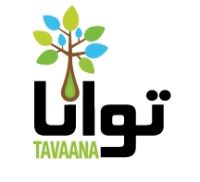Egypt Analysis: How the US Should Be Engaging Cairo (Ezell)
 Wednesday, February 9, 2011 at 5:42 |
Wednesday, February 9, 2011 at 5:42 |  Scott Lucas in
Scott Lucas in  EA Middle East and Turkey,
EA Middle East and Turkey,  Middle East and Iran
Middle East and Iran  Darrell Ezell, a specialist in inter-faith dialogue and public diplomacy, writes for EA:
Darrell Ezell, a specialist in inter-faith dialogue and public diplomacy, writes for EA:
The White House and the State Department's reaction to the crisis in Egypt indicates Washington is behind the curve on fulfilling its promise to engage Muslim communities throughout the Arab World. Its narrow focus on countering terror rather than grasping the social ramifications of U.S. foreign policy in the Middle East region points to why insiders were caught off-guard by the events of the last two weeks.
But this is not a shock. Since 9/11, key US policymakers have been misreading the Arab World’s socio-political terrain. Reports focus on ensuring short-term American success in the region rather than on a building and sustaining of strategic relations with Muslim communities.
Obama's Public Diplomacy: Big Symbols, Limited Interaction
Since 2009, the State Department’s aim was to engage elites while putting forth symbols to pacify Muslim communities. With the approach, Washington ran the risk of winning the “hearts and minds” of Arab elites through monetary and political persuasion, while creating a deficit of trust with Middle East and North African publics.
To move forward, key US officials must take note that neither a dose of White House public interference or a shot of public diplomacy is healthy in this situation. Richard Haass, the President of the Council on Foreign Relations, is correct to insist that “less is more” from Washington. The White House must be cognizant that the Egyptian people must decide the best course of political action for Egypt.
Appreciating the perspectives of secular Arab youth, grassroots organizations, and Islamist leadership requires going beyond the State Department’s reactive tools in its high-tech, digital diplomacy, social-networking campaign. Social networking outlets such as Facebook and Twitter have their uses. However, they function in a reactive capacity, allowing Washington to gather the inside story from one direction in real-time. To be proactive, US departments and agencies must exercise broad engagement at an in-depth level.
When communicating at this level, it will be understood that Egypt is presently a microcosm of the Arab World. Smaller pro-reformist uprisings that are growing in Arab countries --- Yemen, Syria, Libya, Morocco, Algeria, Jordan, Saudi Arabia, Oman, and Sudan --- regard the Tunisian and Egyptian social experiments as a litmus test. In the coming weeks, these uprisings are set to shake up traditional US diplomatic engagement from traditional two-party talks between elites to three- and four=party talks that include leadership from moderate to radical reformist groups such as the Muslim Brotherhood.
The highly profitable and exploitative US-Egyptian relationship, totaling $70 billion over 30 years in American economic and military aid, is no secret to protesters. Steven A. Cook reminds:
From the perspective of many Egyptians, [the U.S. Egypt relationship] hopelessly constrained Cairo’s power while freeing Israel and the United State to pursue their regional interest unencumbered. Without the threat of war with Egypt, Israel poured hundreds of thousands of Israelis into settlements in the West Bank and the Gaza Strip, invaded Lebanon (twice), declared Jerusalem its capital, and bombed Iraq and Syria. For the United States, Mubarak was pivotal in creating a regional order that made it easier and less expensive for Washington to pursue its interests, from the free flow of oil to the protection of Israel and the prevention of any one country in the region from becoming too dominant.
This relationship was the germ of Egypt’s enclave of political corruption and mass inequality. I found on a trip in December 2010 to Cairo and Alexandria that Egypt’s socio-political climate was close to a tinderbox. In private, university students in Old Cairo pointed out their anxiety toward the Mubarak regime and how political and economic corruptions were reaching the limits of toleration.
The attitude of those students toward US-Egyptian relations reinforced my belief that the US Government must ensure that a “feed-back loop” is present to directly engage non-elite point of views. With a communication strategy that reaches deep enough into the core of Islamic society, US policymakers can ascertain and appreciate its goals, ensuring Washington is in front of the curve of change.
Neither the US use of social media nor its public diplomacy, as they stand, will bring this about. It will take two-way communication, cultivated by direct interaction with those beyond the elites. Are the White House and State Department prepared to engage directly with these people, even if the Americans encounter a "radical" Arab nationalism, which challenges the perspectives of Israel and the US "interests" in the region?

Reader Comments